Long time no talk.
We’ve been in Puerto Rico since February 6th, and have lots to tell you about our stay here. Wade & Kim, our first boat guests, just left after spending the last eight or nine days with us. We snorkled, fished – well, tried to fish, surfed and toured the island a little bit. I’m still hurtin’ from the surfin’.
But I’ll tell you all about it later. For now, I want to catch you up on our adventures in the Dominican Republic.
Cofresi to Samaná Bay, Dominican Republic (24 to 25-Jan-2013)
I told you about clearing in and our first, fairly eventful day in the DR. Despite feeling a little run-down, we got up bright and early the next morning to start the 24 hour trip from Cofresi to Samaná Bay. The weather was right, and we’re slaves to the weather when we’re on the move.
It was cloudy when we left Ocean World, but cleared up later in the day. The wind was light and on the nose, so we motored mostly. The winds and seas increased that night, though, which spelled trouble for me. Dark + high winds + lumpy seas = a very seasick first mate. (This seasickness thing is becoming a real problem, but we picked up some Seabands and ginger gum here in PR – gravol/dramamine makes me fall asleep).
We arrived at Puerto Bahia (0.90/ft/day) sometime mid-morning. For some reason I didn’t write our arrival time down in the log…oh yeah, I was too busy trying not to vomit.
We had a little too much help getting our boat situated in the slip. We’re getting the hang of the Caribbean docking style, but having excess assistance can be like too many cooks spoiling the broth. We got settled nontheless, gave the friendly man from the DR Navy our dispatchio from Ocean World, then went to explore the facilities.
Puerto Bahia, Samaná Bay, Dominican Republic (25 to 30-Jan-2013)
I was reviewing the log for this post, and was a little surprised to see that we spent six days at the Puerto Bahia marina. It was comfy, and our month-long marina stay in TCI made us pretty soft I suppose.
In addition to enjoying the fancy facilities, one day we walked into the town of Santa Barbara de Samaná (more commonly known as just “Samaná”).
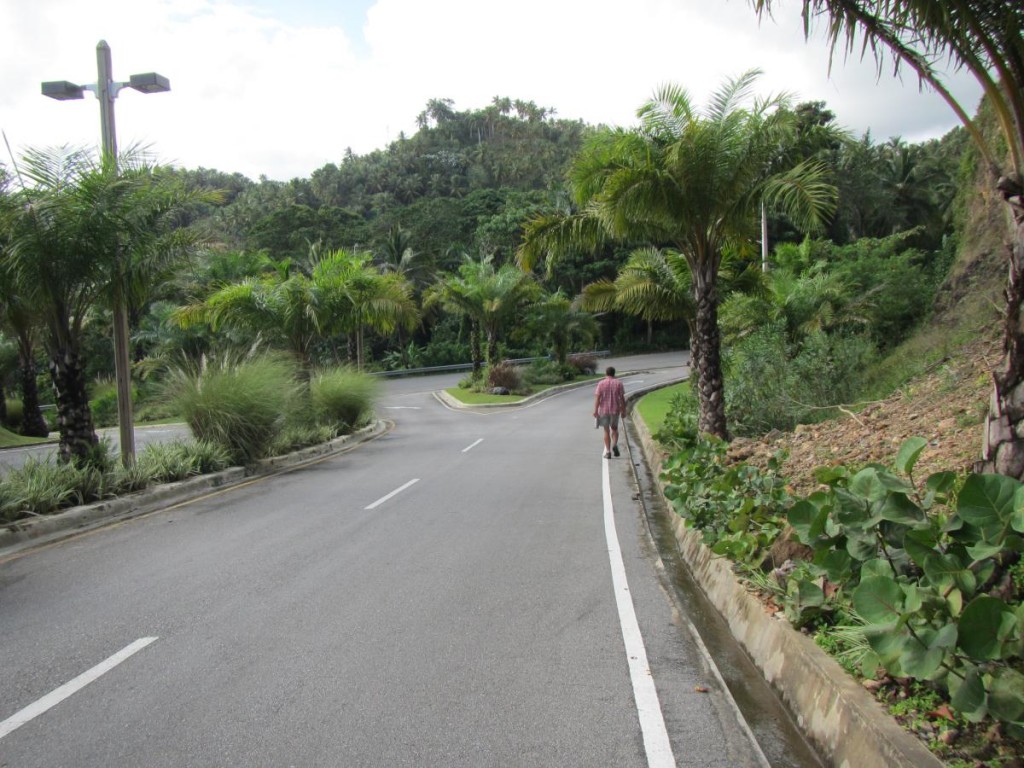
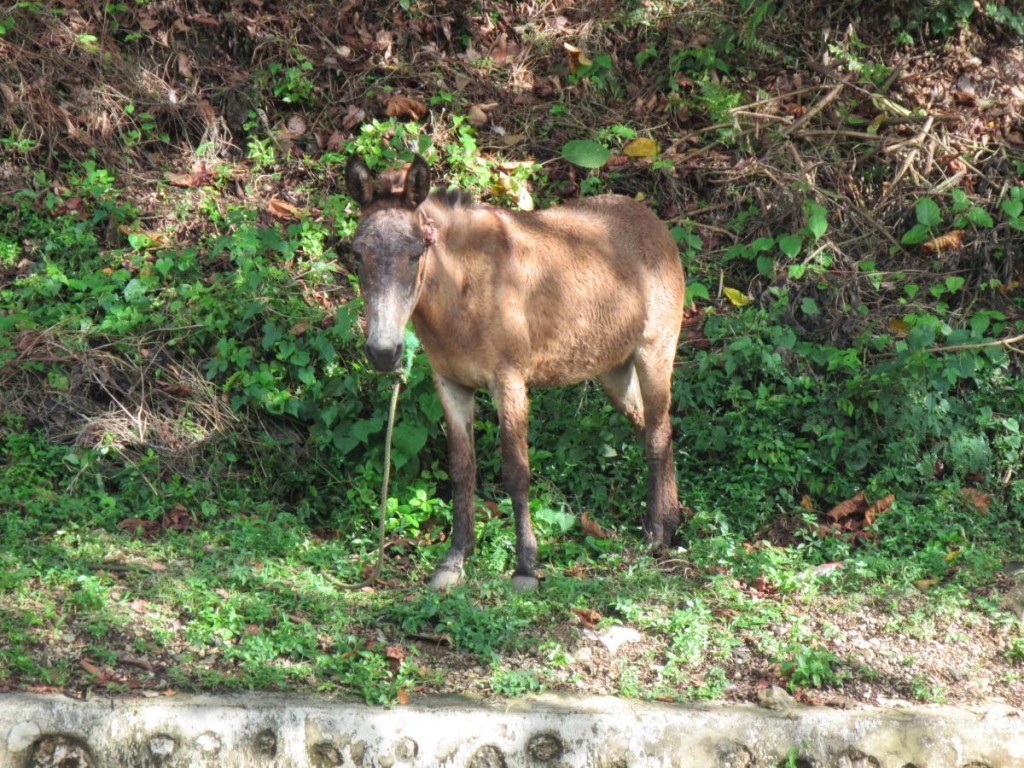
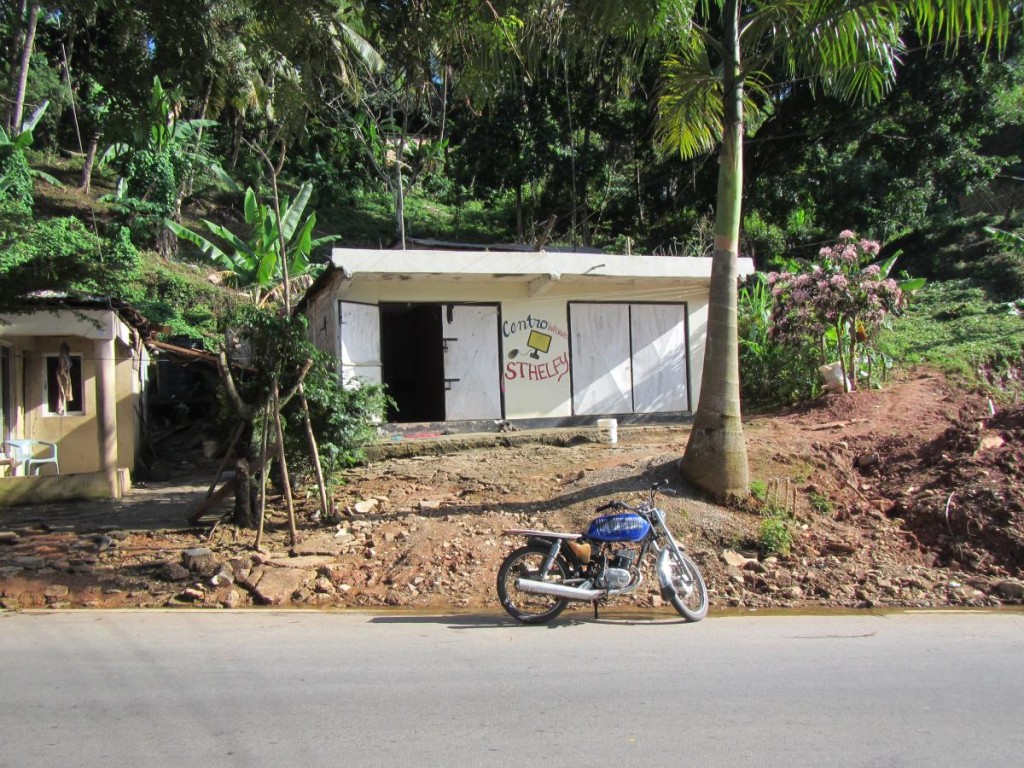
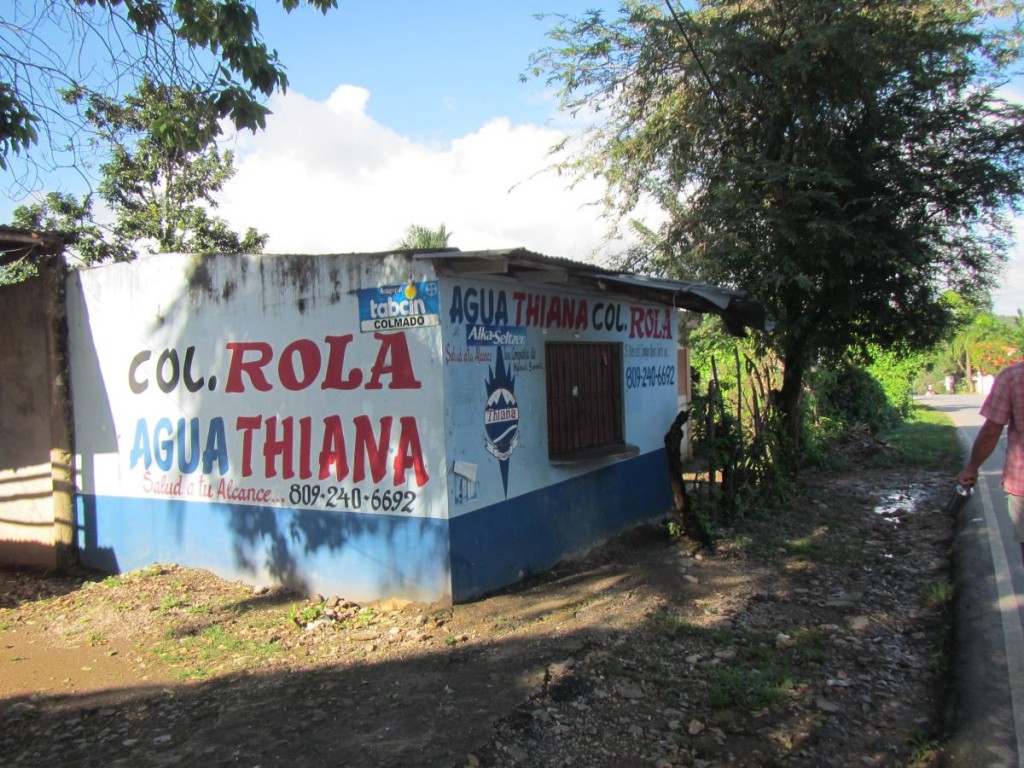
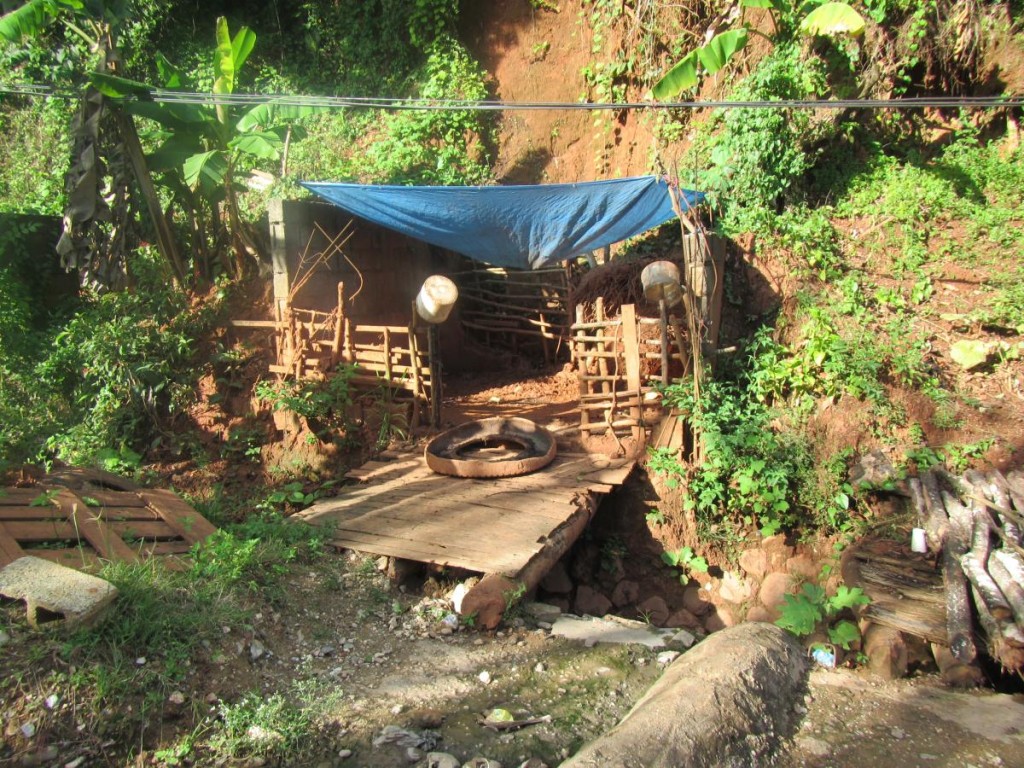
It was a pleasant walk. People were very friendly and had such genuine smiles, and the little kids were very enthusiastic about saying hello to us.
We saw all the signs and tourist brochures for whale watching in Samaná Bay long before we saw the whales for ourselves.
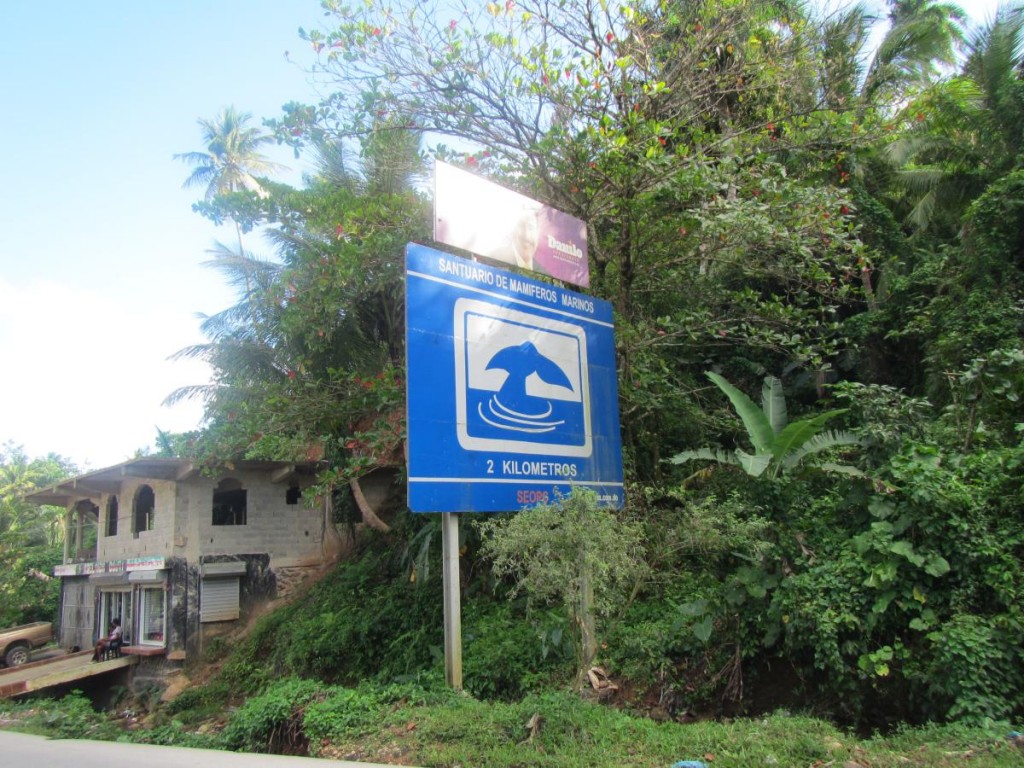
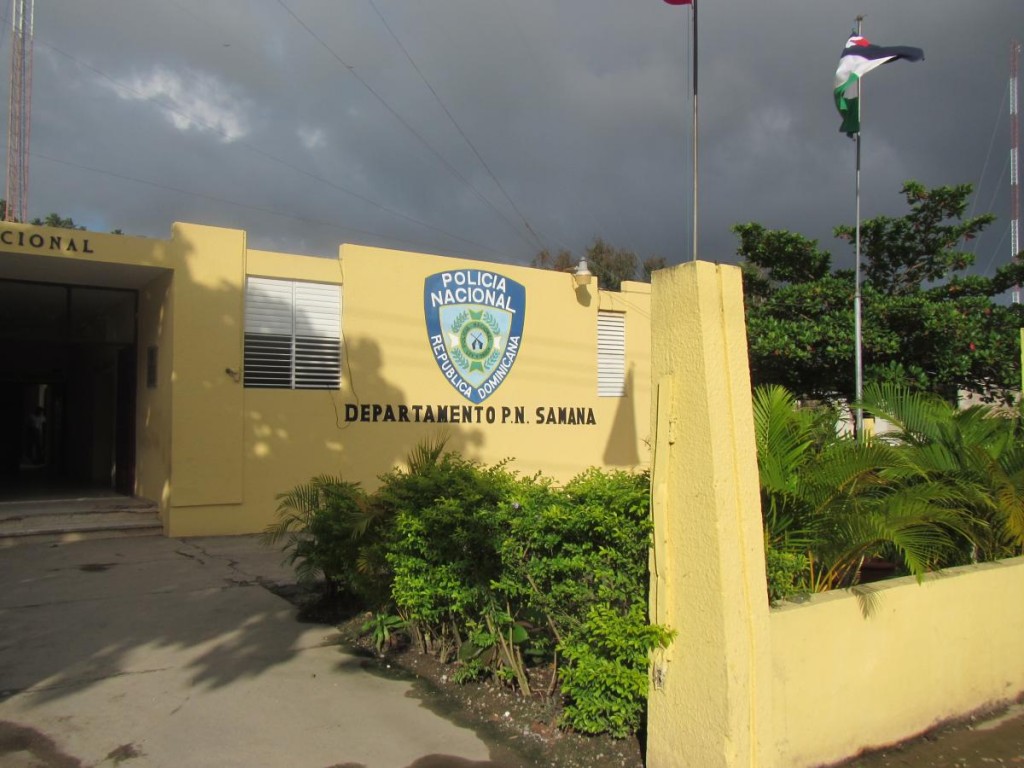
We toured around the downtown market and enjoyed looking at all the local produce. Most of the people staffing the stands grew the produce themselves.
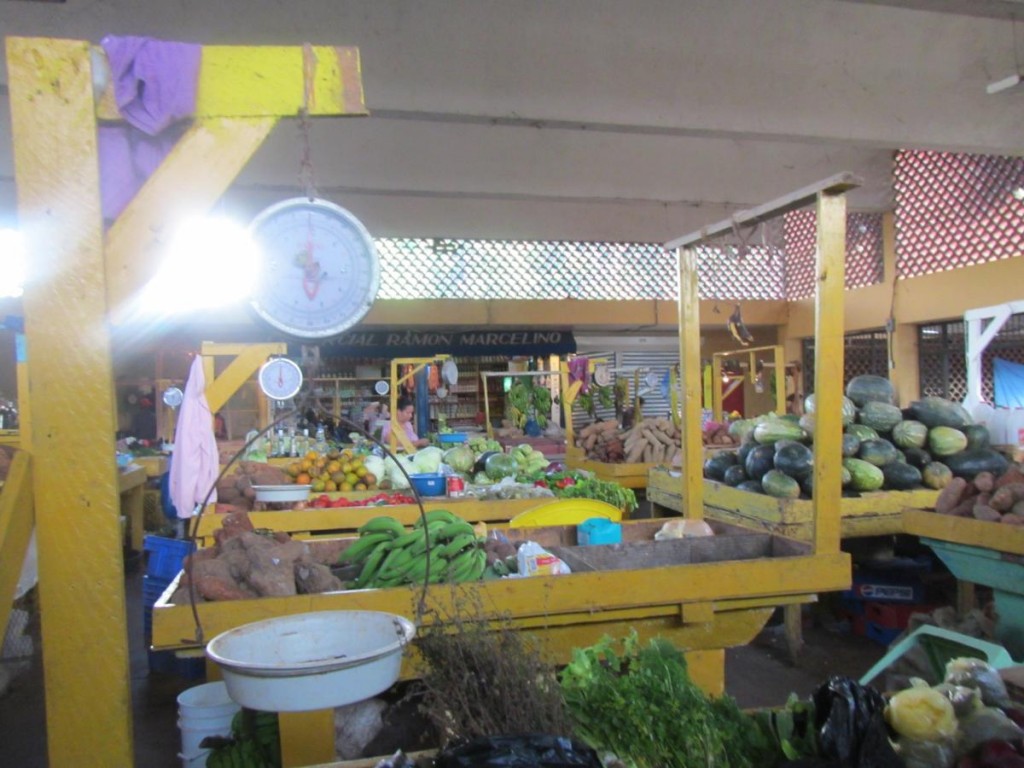
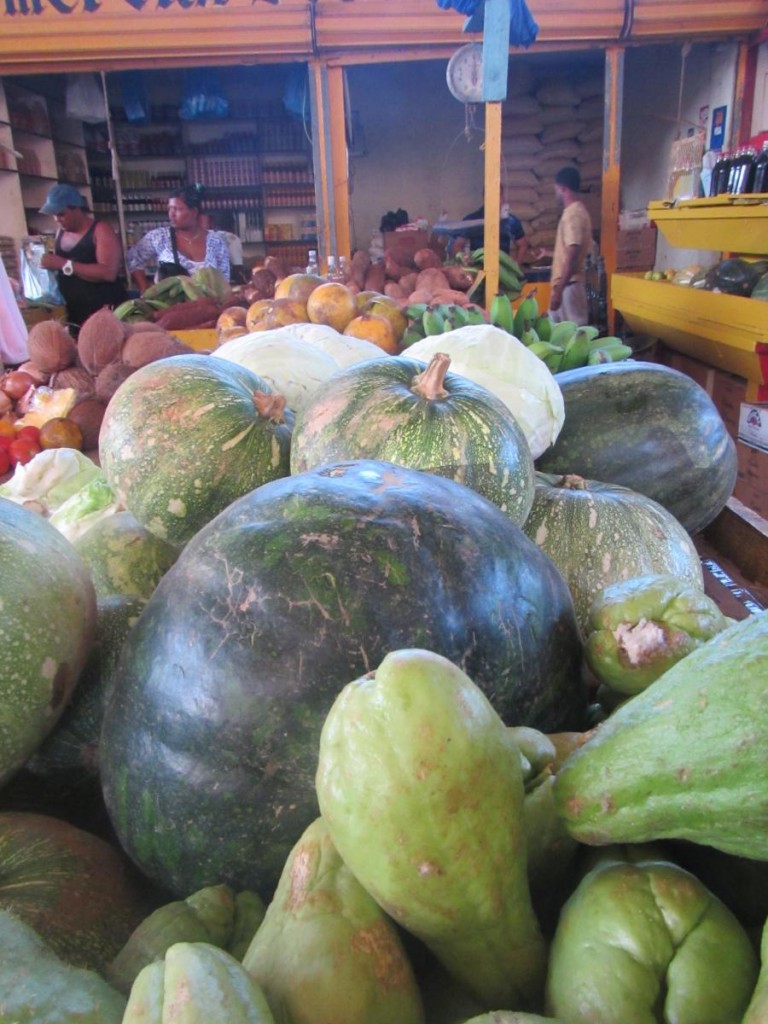
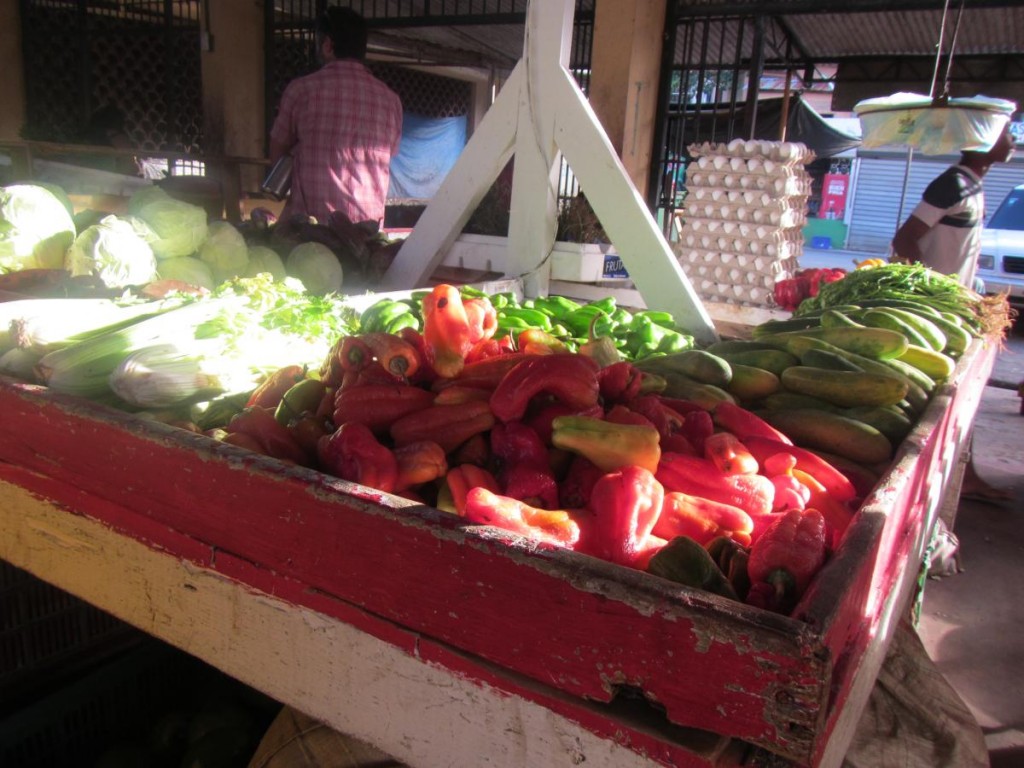
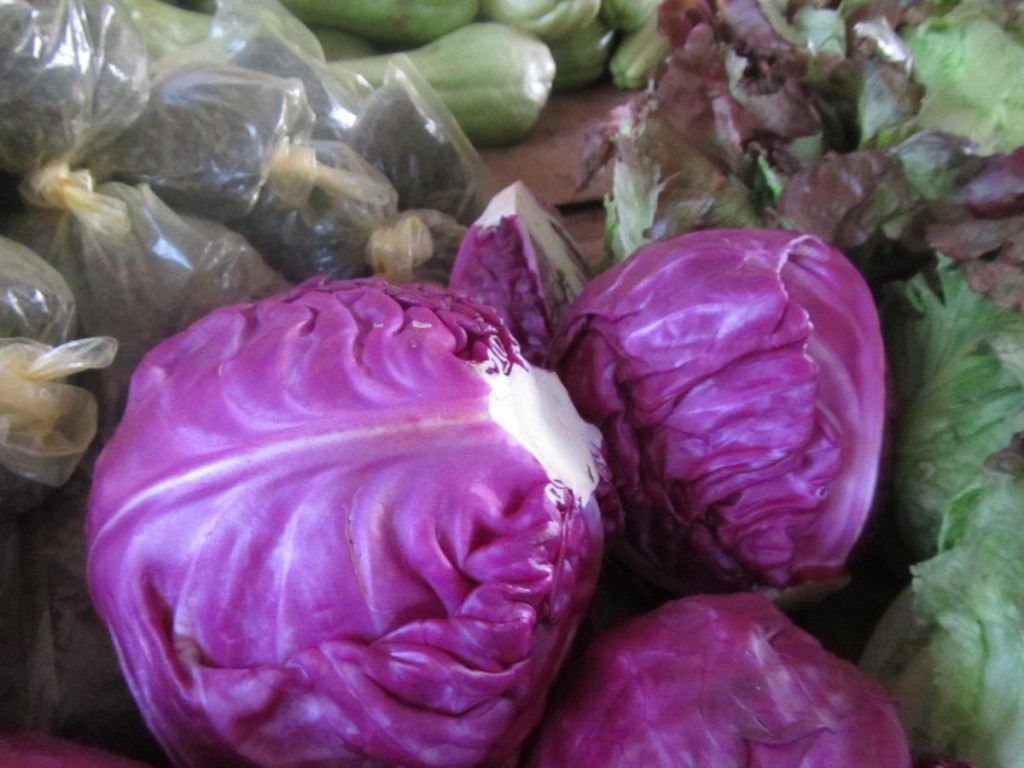
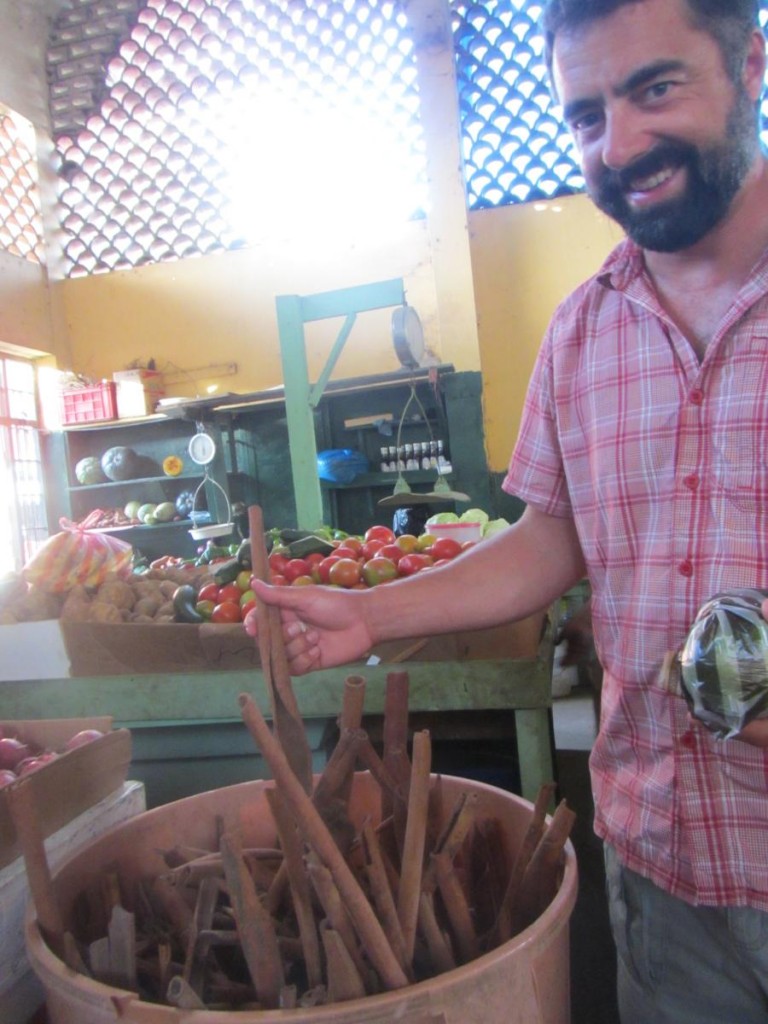
We had the freshest bananas ever as we left the market. They’re smaller than the ones we get back home, but much better tasting. Phill was still pretty hungry so he grabbed a slice of pizza from a street vendor. It cost one dollar. A buck!
We wandered around some more, taking in the sights, then went to a place for dinner (recommended by a local), and weren’t disappointed. Eating out in the DR was so much cheaper than anywhere else we’d been in the past half year, it felt less like a guilty splurge. We would have spent more to get the groceries and cook it ourselves in TCI, or even Miami.
We called Nadin – the cab driver who gave us the restaurant recommendation – when we were ready to head back to the marina. We enjoyed our visit to town, and looked forward to going back with the boat.
Los Haïtises National Park, Dominican Republic (31-Jan-2013 to 02-Feb-2013)
I already told you all about our visit to Los Haïtises – definitely one of the highlights of the adventure so far. The only reason we left was that there was a weather window approaching to do the Mona Passage, so we had to get a move on.
Santa Barbara de Samaná, Dominican Republic (02 to 03-Feb-2013)
We sailed over to Santa Barbara de Samaná and anchored in the bay, inside the Bridges to Nowhere. These are crappy pictures, but there are better ones on the Samaná tourist info website.
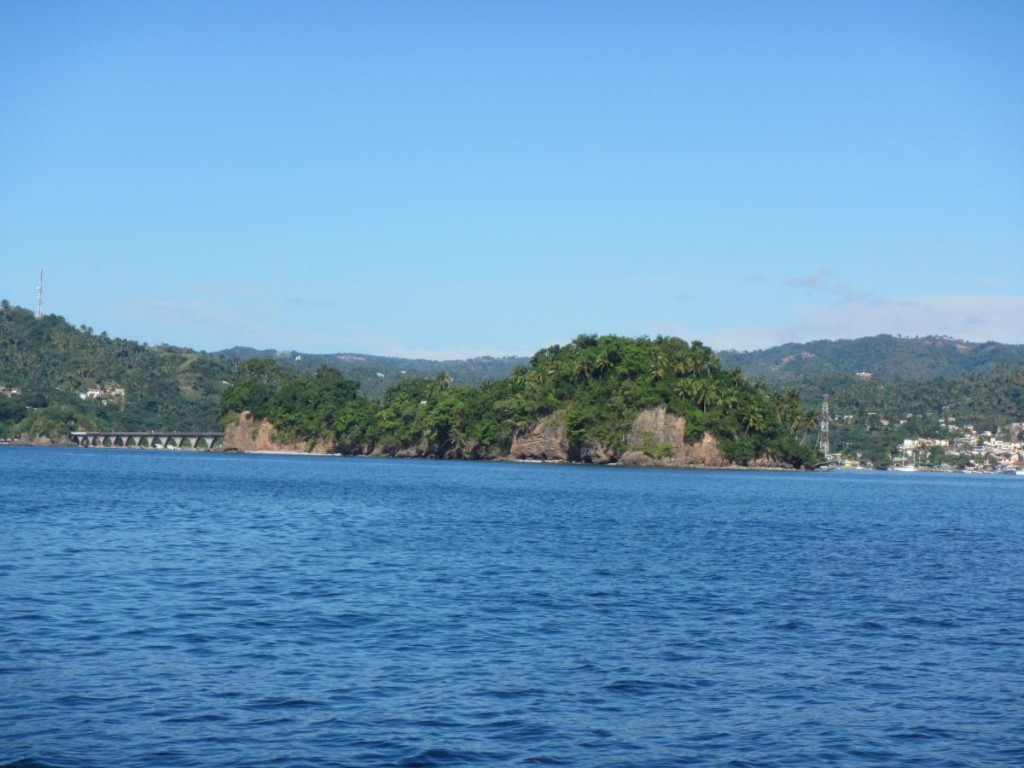
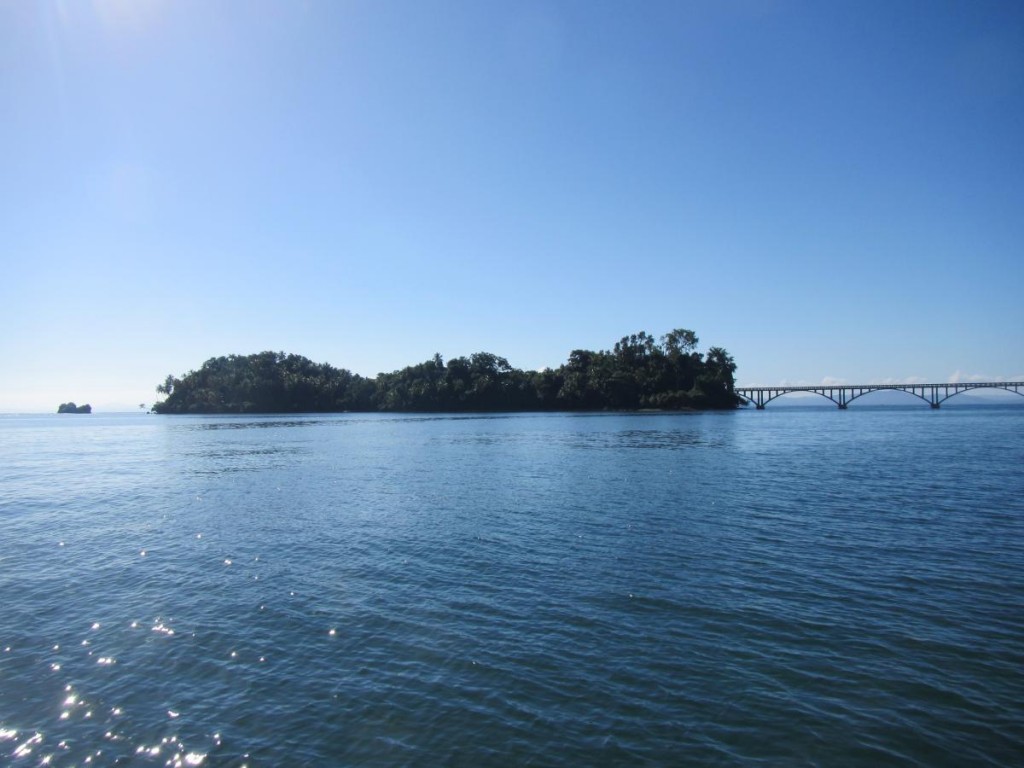
The story is that the Bridges to Nowhere were going to be bridges to somewhere – a resort destination on Cayo Vigie – but the project fell through. Now, the bridges provide a beautiful walking path to the cayo, enjoyed by locals and tourists alike.
We took the dinghy ashore, and brought our arsenal of locks. Though we try not to listen to other peoples’ horror stories, several sources suggested that if we didn’t lock our dinghy and outboard in Samaná, we’d be sure to lose the motor and lucky to keep the dinghy. So we locked it all up. We’re not accustomed to locking our stuff when we go ashore, so it was quite a motley assembly of bike, padlocks and cables to secure everything.
Not sure where the day went, but we ended up going to the restaurant at the Bahia View Hotel for dinner (recommended to us by a Spanish captain we met at the Puerto Bahia). There we met the proprietor, Wellington, and his son, Luis. We enjoyed the house specialty, seafood mixta, which was delicious. Wellington and his son both speak fluent English, and we learned a lot about Dominican culture and history that evening.
The next day, we came back to Hotel Bahia View, and Luis arranged some transportation for us to Wellington’s other establishment up in the hills that has a great view of the bay. This is where it started to really feel like an adventure for us. As products of a nanny state, Phill and I both thought it was pretty exciting to get around via modes of transportation that are 100% illegal in Canada.
Guaguas (pronounced gwah-gwahs) are private vans, trucks or cars that leave from regular locations when there are a few passengers bound for the same direction. Empty seats get filled by people who flag them down anywhere enroute. A motoconcho is a low-powered motorcycle that one – or many! – passengers climb onto to get around town. Both play a huge role in the public transportation system of the DR.
Luis didn’t have much confidence we’d be able to explain where we wanted to go to the guagua driver, so he arranged for a motoconcho to take us to the guagua stand and explain where we wanted to go. The motoconcho arrived, and Luis watched, obviously amused, while we tried to climb on. I was ready to kick a leg over, cowboy-style, but he said “women ride side-saddle here – try it”. So I sat sideways on the seat, crossing my ankles like I saw other women do, so that both feet were secured on one foot peg. Then Phill climbed on behind me.
Phill, me and driver made three! On a tiny motor cycle! Luis was all smiles, and told us to have fun as we took off. It was fun and a little bit scary, but mostly fun. The driver stopped at the guagua stand and explained to one of the guys where we wanted to go. Our new guagua driver motioned for us to climb in…to the open back of his pickup!
A wooden bench lined the sides of the truck’s bed, with a little hand rail mounted on the edge. No seatbelts – heck, no seats! – so we were feelin’ a little illegal and loving it. Two other guys climbed in with us, then we were off. It was fun! I’m sure rural kids in Canada get to enjoy an open air ride in a the back of a truck now and then, but we city folk are seriously deprived.
It was a beautiful ride through the hills, with the occasional jaw-dropping view of Samaná Bay. I brought the camera, but forgot to put the battery back in after the last charge. I was so disappointed at the time, but in hindsight, I think I enjoyed the ride a little more having no pressure to capture it.
People got on and off the guagua as we made our way into the hills. I was so impressed by how perfect strangers helped one another to and from the truck, and by how a few pleasantries exchanged are just part of the unhurried culture. There may not be a lot of money in the DR, but there’s a lot of humanity. I couldn’t help but think of how grouchy and completely isolated-by-their-electronic-devices riders on Canadian public transportation can be.
We’re driving along when we suddenly heard a man shouting in Spanish. The guagua stops and we see Wellington running up to the back of the truck. “He wasn’t going to let you off at my place!”. We clambered out of the truck, with the help of our fellow passengers, paid the driver (what equated to about a dollar and forty cents), and followed Wellington to his hilltop restaurant. Our time with Wellington at his new place is post-worthy on its own, so I’ll tell you more later.
We had a great afternoon, then hitched a ride on another guagua (again, we were in the back of a pick-up), and made our way back to town. We picked up a few provisions for the Mona Passage, then went back to the boat.
We had a good sleep, and the next morning went back to Puerto Bahia for fuel & water (which I’ve already told you about).
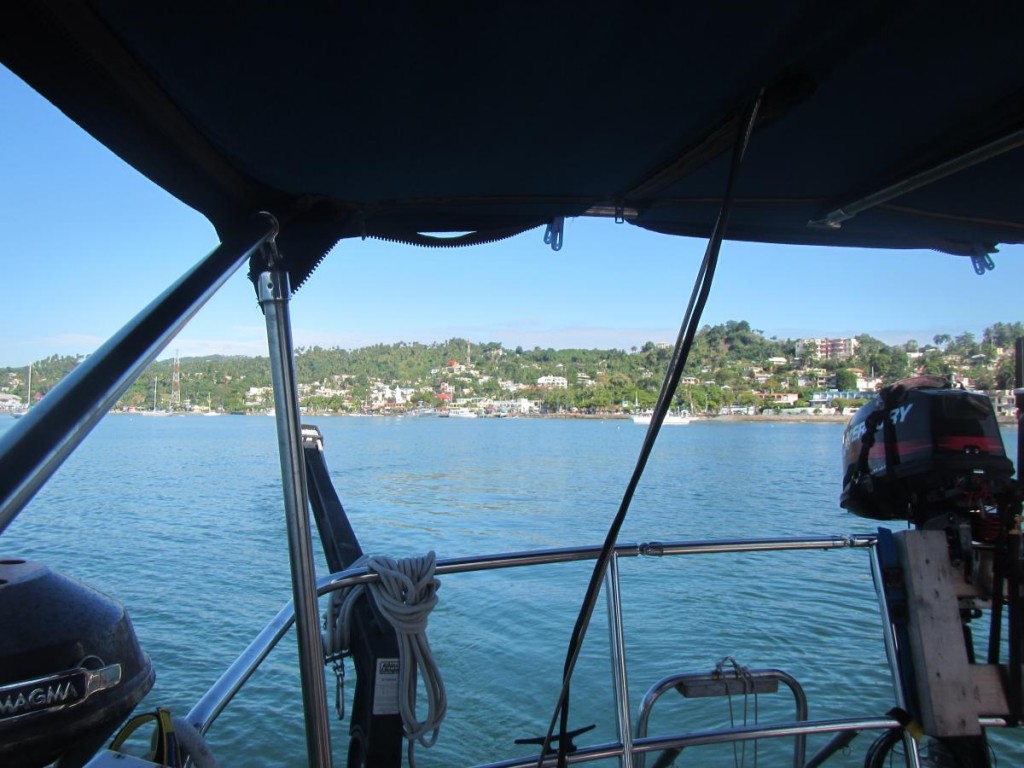
Puerto Bahia, Dominican Republic to Mayagüez, Puerto Rico (04 to 06-Feb-2013)
We enjoyed our final night at Puerto Bahia, and the next day, we putzed around the boat, topping up fuel and water. We forgot to spend our small wad of Dominican pesos. Oops. Then we left mid-afternoon for PR.
I’ve already told you about our Mona Passage experience. We arrived in Mayagüez and cleared in a few hours later.
So I’ll save our Puerto Rico experience for another post. Our friends, Andrew & Ela are arriving tomorrow to tour the rest of the PR south coast, and join us on our passages to Vieques, Culebra and US Virgin Islands. We’re looking forward to it.
‘Til the next laundry stop…

Hi Water Music,
We should be making the crossing to Puerto Rico on Thursday, mind you after reading about yours have my doubts. I do hope we can catch up and hope that you will be able to join us in Fajardo at our condo. We shall be having a big party with all the boats and friends we have met along the way and are traveling with right now.
Cherry Doug and Pinot
Sounds like you had a great crossing to PR! No seasickness? No midnight coast guard encounters?
Hello Thanks for the update, I was getting worried as your GPS was tracking you travelling on land and still is? not sure it its working 100%? So glad to hear your are having company on your travels, wish we could be there as well! Safe travels especially on your next passage as it looks like it will take many days! Take care
Love the Boutin Family
Hi Pauline – we took a couple of road trips with Wade ‘n Kim, so that’s why the over-land SPOTs.